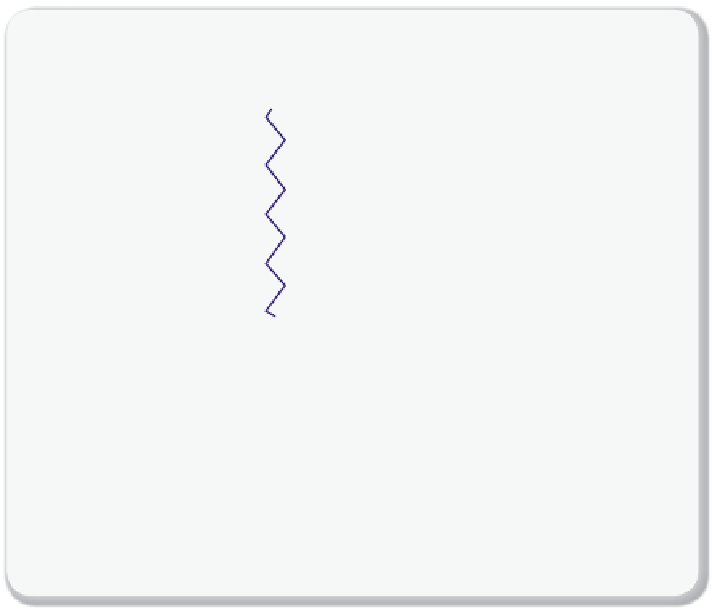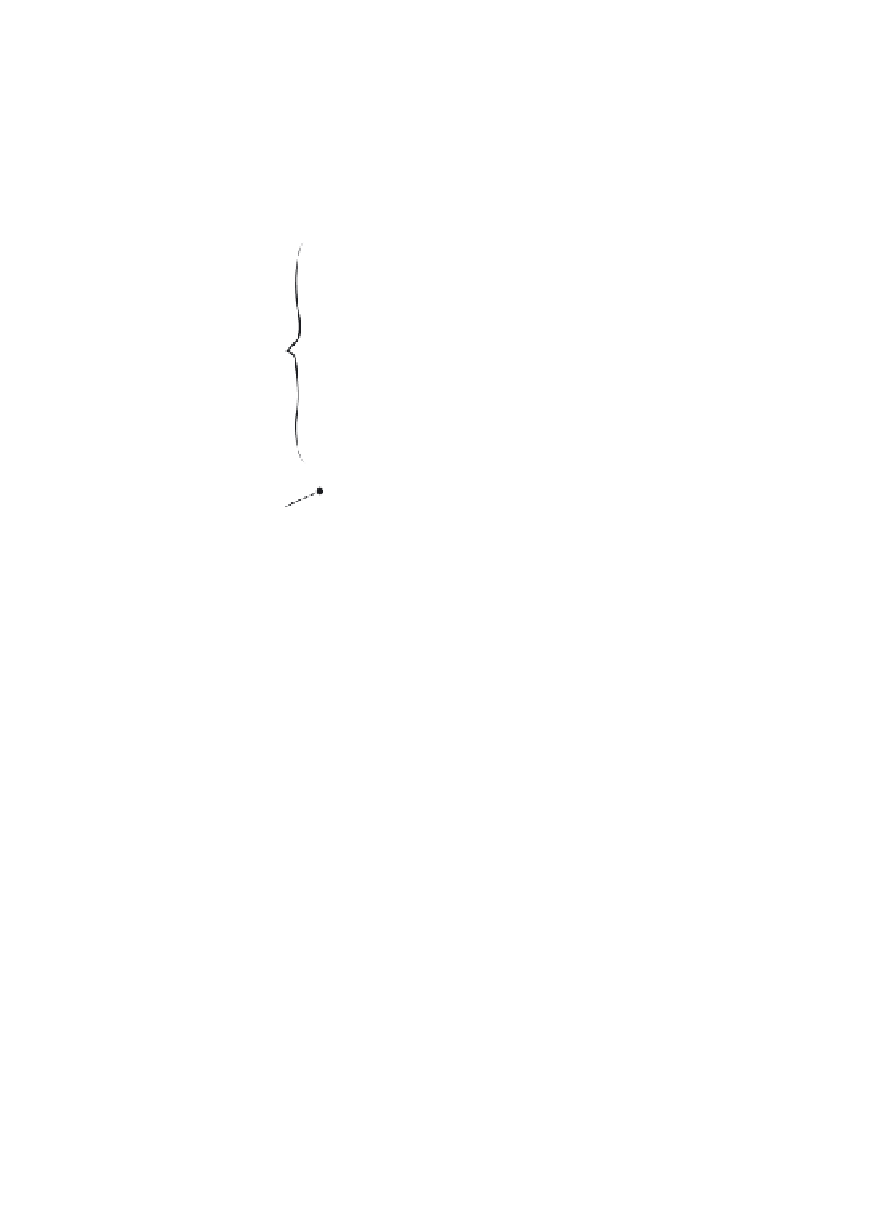Environmental Engineering Reference
In-Depth Information
Feed side
Carriers fixed on the polymer
backbone
CO
2
CH
4
NH
2
CO
2
only by
diffusion
H
2
O
Reversible
reaction
Polymer layer
coated on
porous support
HCO
3
-
NH
3
+
CO
2
H
2
O
Porous support
CO
2
CH
4
Permeate side
Figure 7.5.7
Facilitated transport of CO
2
in a polymer membrane for carbon capture
Amine-containing groups are fi xed on the polymer backbone.
Figure adapted from Kim
et al.
[7.13].
This zwitterion reacts with another amine, which takes the proton:
+
−
−
+
NHR R
CO
+ NHR R
NR R
CO
+ NH R R
12
2
12
12
2
2 12
The CO
2
-
group can move along the backbone of the polymer through hops
from one amine group to the other (like a bucket brigade). As this hopping
of the CO
2
-
group is on top of the diffusion of CO
2
in the gas phase, we
obtain an enhancement of the permeation. Since neither CH
4
nor N
2
inter-
acts with the amine group, we also see an enhancement of the selectivity.
If in addition to the amine groups we also have water in our membrane, we
can have CO
2
reacting with the amine groups and now we can form HCO
3
−
and NH
3
+
. Because HCO
3
−
can diffuse in the water phase, it will generally
have a higher diffusion coeffi cient compared to the dry amines.
Several examples of these amines have been published (e.g., [7.8,
7.14, and 7.15]).
Box 7.5.1
gives an example of a membrane for CO
2
separations that uses facilitated transport.























Search WWH ::

Custom Search